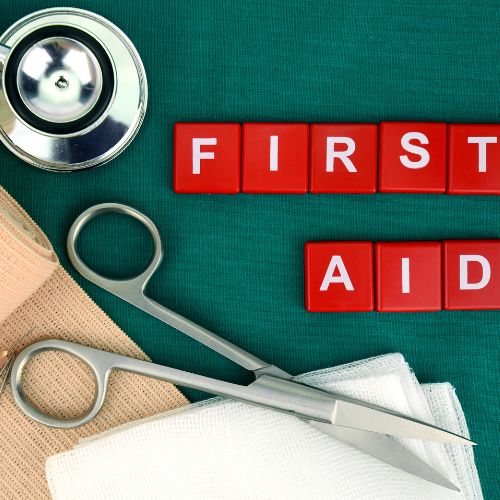When the seconds count and emergencies arise, accurate information can make a difference in saving a life. But do you know what to do exactly?
Some outdated medical practices continue circulating, and some television shows and movies even present erroneous and dangerous emergency management methods. Whether it’s obsolete information or emerging misconceptions, everyone has made one of these myths at least once. In this blog, the Coast2Coast’s editorial team, located at their new office for first aid training Calgary, will help us uncover the truth behind 7 first aid myths.
Myth #1: Use a paper bag to breath to calm hyperventilation.
Hyperventilation attacks are caused by factors such as asthma or panic attacks.
We have seen in several movies that breathing into a paper bag helps soothe people with hyperventilation by bringing lost carbon dioxide into the body. However, this practice is very dangerous, and there are better methods to help regulate breathing, such as encouraging the patient to take deep, slow and controlled breaths.
Myth #2: Vomit to remove poison from the human body.
Making a poisoned person vomit usually causes further damage and is not recommended. All toxic substances can cause various injuries when swallowed, and releasing these same toxins can cause more damage as they move back into the body. Always consult your doctor and follow his instructions carefully.
Myth #3: Tilt your head back to stop a nosebleed.
Tilting the head after a nosebleed is a common habit that should not be continued. This can cause blood to build up in the throat and cause choking, stomach irritation or vomiting.
The best way to treat nosebleeds is to sit up straight and lean forward slightly to let the blood flow from your nose. Then pinch the soft part of the nose for 10 to 15 minutes or until the bleeding stops.
Myth #4: Apply suction, ice, electricity, or a tourniquet to stop the spread of a venomous snake bite through the body.
Although we have seen these procedures in several movies, they are ineffective in stopping venom spread. In fact, it will cause more pain and injury.
In Canada, there are three venomous rattlesnakes to be aware of: Northern Pacific Rattlesnakes, Massasauga Rattlesnakes, and Prairie Rattlesnakes.
The best way to avoid snake bites is to wear appropriate footwear when hiking and to always be aware of your surroundings. If you encounter a rattlesnake, slowly back away to ensure the snake doesn’t get worse.
If you get bitten by a venomous snake, call 911, and keep a log of the snake’s attack to help medical responders choose the best treatment. Also, it is advisable to keep the victim still and calm to slow the venom from spreading. You can wash the wound with water and cover it with a clean, dry cloth.
Myth #5: Get rid of the tick by burning it with a flame.
This remedy is not the most effective method because it relies on the tick detaching itself, which could take hours. This could trigger a sense of danger for the tick, increasing the chances of exposure to Lyme disease.
Instead, use tweezers to grasp the tick by the head as close to the person’s skin and pull upwards slowly until the tick releases.
Myth #6: You need upper-body strength to perform CPR compressions.
In proper CPR training, compression comes from the weight of the trunk and upper body, not the arm muscles. Poor body technique or poor posture can cause your arms and shoulders to tire quickly during CPR. Avoid rocking back and forth, as this will make your pressure less effective and waste energy.
Myth #7: CPR can instantly wake someone up.
Although CPR is a life-saving procedure, unlike in the movies, its purpose and function is not to wake someone up immediately. CPR increases survival rates for cardiac arrest victims by restoring blood flow to vital organs.
First Aid Training for you
First aid training edmonton empowers people with the latest first-aid knowledge to handle emergencies effectively. Enroll in our first aid course online and become a hero. If you are in Canada, find the nearest Coast2Coast location to get yourself certified today.








